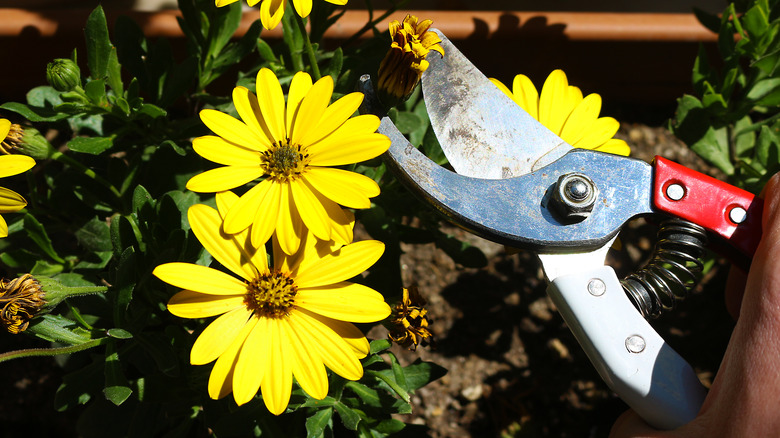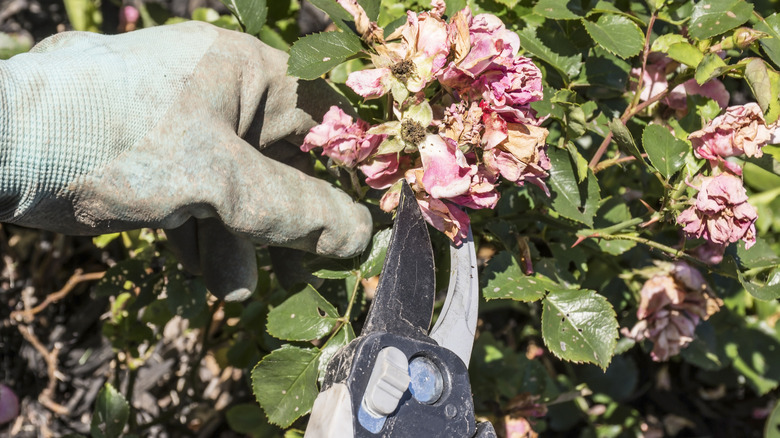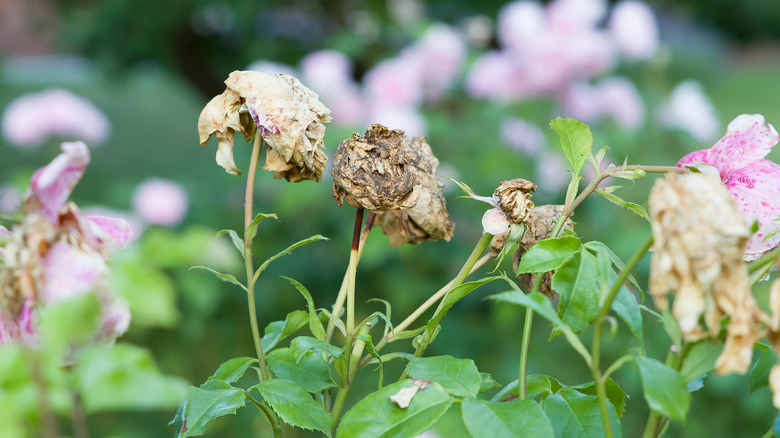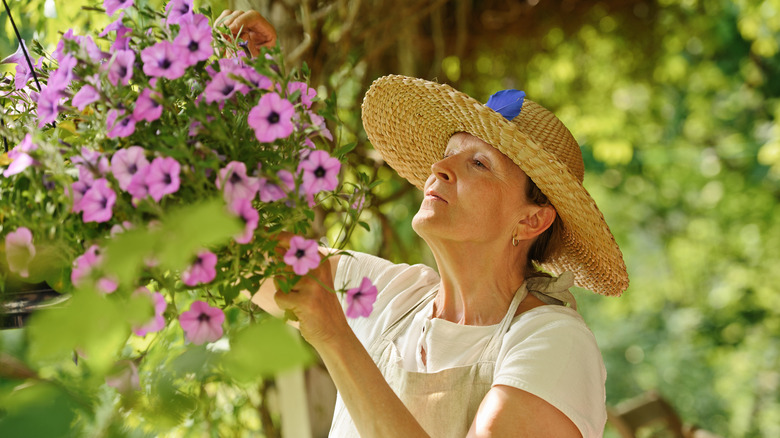What Is Deadheading In The Garden And Is It A Must?
Some people enjoy gardening because working in the dirt is therapeutic and stress-relieving. Others take pride in cultivating beautiful blooms that maximize their home's curb appeal. Or there are some who like all of the challenges that gardening can present.
Nearly all gardeners would agree, though, that any little trick that allows them to extend the life and beauty of their flowers is worth pursuing. Gardening is, generally, a time-intensive hobby (some may think of it more as a labor of love than a hobby due to the commitment required). Because of this, gardeners want to enjoy their flowers as long as they can before the growing season ends.
Luckily, there's a simple technique that allows them to do exactly that. If you took a poll of gardeners, some would call it a trick, and others may call it a chore. However, all would likely agree that setting aside a few extra minutes to deadhead pays off.
What is deadheading?
Long before fans of the Grateful Dead called themselves Dead Heads, gardeners have used a technique called deadheading to extend the bloom time of certain plants. Deadheading is the process of removing spent blooms to maintain a plant's attractiveness and performance throughout the growing season. The way it works is that, when you remove the dead blooms, the plant redirects its energy, strength, and nutrients from them to producing new seeds and flowers instead, per BobVila.com. The result? You could get a second round of blooms or more during the growing season.
Not all flowering plants should be deadheaded, though, as some must reseed so that they can bloom again the following year. If you have hollyhocks or foxglove in your garden, for example, make sure you leave them alone after their bloom time has ended so that they can reseed. As always, look up the care instructions specific to your plants so you'll know whether deadheading is needed or not.
Why you should deadhead
Deadheading allows you to prolong the bloom time of many flowering varieties in your garden. With how much time you devote to your green-thumbed hobby, it's understandable that you want to stretch the beauty of your labor as long as nature will allow. Removing the spent blooms also tidies up the flower bed's overall appearance. Another positive way to look at it? Gardening Know How says that deadheading is nature's way of rewarding you with another wave of blooms to enjoy.
However, if you prefer a more relaxed, cottage-garden-style appearance to your landscape, you don't have to deadhead. Heading out for vacation and worried about the state of your garden when you get back? If you can't sweet-talk your neighbor into deadheading for you, don't stress too much. Deadheading isn't a must. At the end of the day, the practice is really for aesthetics and not as much about the health of your plants.
How and when to deadhead
If you have a large garden, deadheading can certainly feel like a tedious, never-ending task, but the actual mechanics of it are quite simple. After flower blossoms die, cut or pinch them off of the stem just below the flower itself and above the first set of healthy leaves, per Gardening Know How. Alternatively, it might be simpler to shear away the top few inches of the stem to remove the spent bloom and encourage new growth.
Some annuals, like beginner-friendly petunias, are a breeze to deadhead and don't require any special gardening tools. Since the flowers of a petunia are usually open and trumpet-shaped, it's easy to know when it's time to deadhead because they close up and look crispy or shriveled. Then you pinch them off with your fingers, and you're done.
The timing of this garden chore depends entirely on the type of plant you're deadheading. Gardening Know How recommends that, if you get into the habit of doing a little bit of deadheading each day, the work will be much more manageable. If you leave it all until halfway through the summer, you'll probably end up overwhelmed and not want to finish the job.



